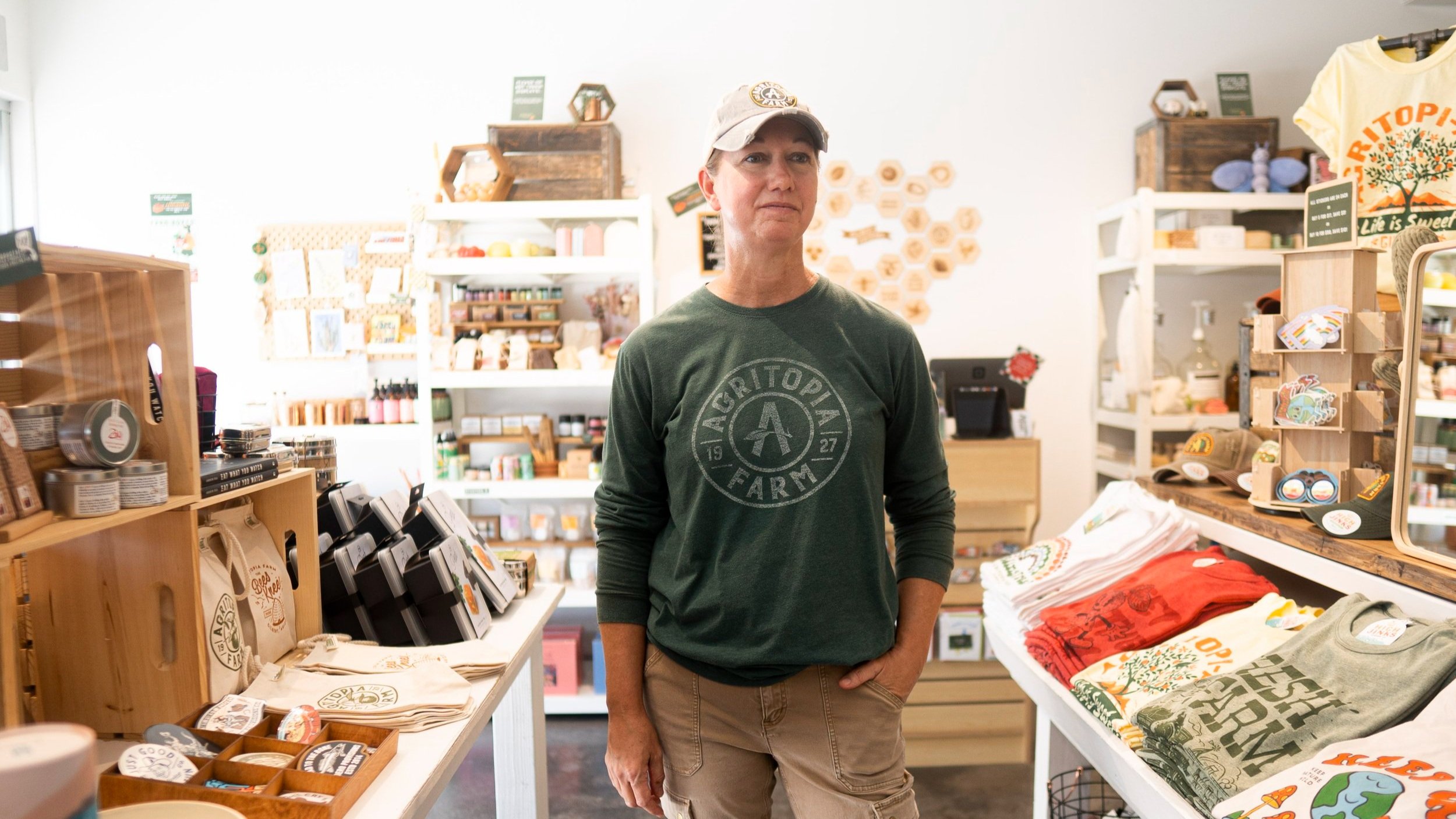The Farm at Agritopia: Pioneering Collaborative Farming in an Urban Setting
Located in Gilbert, Agritopia Farm was created with the hopes of fostering deep community connection through food. Known as the heartbeat of the Agritopia neighborhood, the farm provides locals with a bountiful harvest with their CSA program, farm store, and more.
But, the Farm at Agritopia is not just a place of agriculture. It is an educational hub, offering a rich tapestry of knowledge and insight into the intricacies of food production. Through workshops, tours, and interactive experiences, visitors have the opportunity to immerse themselves in the fascinating world of sustainable and urban farming. And, by engaging with the land, residents and the surrounding community are also able to connect with how food is grown. Agritopia is a great example for other cities, urban planners, and developers on how to successfully incorporate collaborative farming in an urban setting.
What is Urban Agriculture, and Why Do We Need It?
With farmland being lost at an alarming rate of nearly 40 acres per hour from development, it is important to prioritize the protection of farmland, along with utilizing vacant spaces for urban farms. Urban farms can be anything from tactical gardens, backyard spaces, food forests, greenhouses, green walls, street landscaping, animal husbandry, vertical farms, beekeeping, aquaponics, rooftop gardens, and more.
Urban agriculture serves as a catalyst for community engagement, education, and the revitalization of vacant and underutilized spaces throughout the state. By reconnecting urban dwellers with how food is grown, communities can foster a deeper appreciation for agriculture, promote sustainable practices, and strengthen the local food economy.
Lessons from Farmer Kelly Saxer
Agritopia Farm is embedded in a tranquil neighborhood with more than 11 acres of organic farmland that includes rows of crops, a stone fruit orchard, and even a place where Medjool dates and olives grow. By blending fields of crops with residential areas, the farm is a centerpiece that unifies the neighborhood around agriculture. Residents have access to locally grown produce and can develop a personal connection with the farmers who cultivate their food. This integration promotes a sense of pride, shared responsibility, and appreciation for the hard work involved in growing food.
“I think other communities can learn that having an agricultural component in their community is not only aesthetically appealing, it also offers the community access to local, farm fresh food; and the children of that community have an opportunity to grow up understanding where their food comes from,” shared Agritopia’s Head Farmer, Kelly Saxer.
(P.S. Did you know that medjool dates grow on trees and are typically covered in these pest control bags to protect them during their ripening and growing process?)
Urban Farming's Impact and Ongoing Struggles
As urbanization encroaches on farmland, it is crucial to incorporate urban agriculture to sustain farmers' livelihoods and to ensure food remains local and accessible. “There are fewer and fewer areas where the last tracts of farmland exist, but there are just as many people that need to eat,” Kelly said. “So, it's very important that we incorporate more smaller farms into the landscape of our communities so that we can produce enough food to feed our population, as well as shorten the distance that food needs to travel to reach its destination.”
Keeping the knowledge of farming alive and well within a community plays a big role in the lives of feeding future generations. But, much of the future of farming depends on policy like the 2023 U.S Farm Bill.
“Urban farming makes it easier for the community to access locally grown produce and get to know the farmers that grow their food. The community also becomes more aware of seasonality, and what produce grows at different times throughout the year. But most of all, it’s an opportunity for children to see how their food is grown and develop an appreciation for the hard work that goes into growing food and perhaps one day will develop a love of farming.”
Agritopia is not only a breathtaking model of what urban agriculture can look like, the farm also brings numerous economic and social benefits to its community. Urban farms contribute to the local economy, creating job opportunities and strengthening community-based systems. Most of the produce grown at Agritopia goes either to farm box members or local restaurants—keeping the bounty in local hands.
All of this is without saying there are still very real struggles and challenges for those stepping into urban farming. “For new farmers and those interested in starting a farm, land is expensive and difficult to find in an urban environment,” Kelly said. “It's also difficult to find farm workers who are willing and able to do the hard work. Many people living in an urban setting don't understand farming and what it entails. They also don't realize that raising animals means there are smells and bugs, composting is a smelly endeavor, tractors can raise dust into the air, and farm work begins early in the morning and can be noisy. Increasingly, urban dwellers want agriculture in their community but are not always tolerant of what that entails. I think education is the key to bridging this gap.”
The Role You Can Play
If you want to keep small-scale agriculture and local food in Arizona, support our farmers, whether that be through food, education or digging into the work yourself. For anyone looking to jump into urban farming, consider Kelly’s advice: “Do it! Volunteer or work at a farm, read and learn about what’s happening to farmland and farmers across the country, and support local farmers!”
Other ways to get involved:
Join us at the Good Food Forum + Expo on August 29th
Use your voice and advocate for small to mid-size farmers in the upcoming U.S. Farm Bill. Submit your input here to the Farm Bill Committees:
Learn more about farmland preservation
Explore the possibilities of urban agriculture




